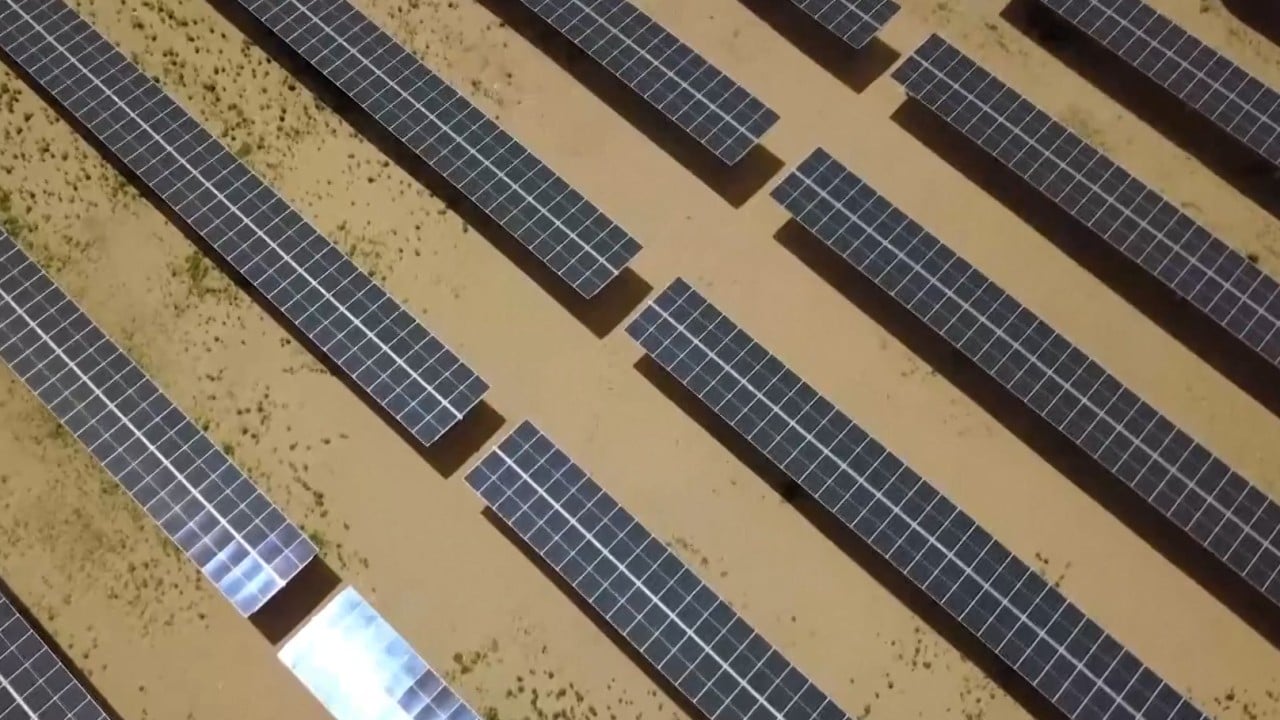
China breaks ground on major project that could boost renewable energy production in Gobi Desert
- It will be the first pumped storage hydropower station in Qinghai, home to the highest installed clean energy capacity in China
- The facility is part of a series of projects in the northwestern province aimed at improving the reliability of the power grid
The station will have two reservoirs and act like a giant battery, releasing water from a higher reservoir to generate electricity when demand is high and pumping water back up using other renewable sources when demand is low.
The Qinghai Warang power station will be operated by the State Grid Corporation, a state-owned electric company, and is part of a series of projects in the province aimed at improving the reliability of the power grid, according to state news agency Xinhua.
World’s largest solar-hydro plant creates power on Tibetan Plateau
However, a major challenge with wind and solar power is that peak energy production often does not align with peak energy consumption, making storage necessary for more flexible use of the power produced.
Liu Yongqi, director of the State Grid’s pumped storage and new energy division, said the station would fill a gap in Qinghai’s pumped storage capacity and play a big role in providing stable energy operation to the power grid.
The Warang station will have a storage capacity of 20 million kilowatt-hours and connect to the Qinghai power grid via a 750-kilovolt transmission line, according to the NEA.
Once the Warang plant is in operation, the storage it provides will be equivalent to a reduction of 4.55 million tonnes (5 million tons) of carbon dioxide emissions every year and will improve energy transmission from surrounding wind and solar plants, according to Xinhua.
The Warang plant is being built in conjunction with three other projects, and together they will improve electricity access for 650,000 people, Xinhua reported.
Xin Baoan, chairman and secretary of the State Grid Corporation, said the projects would “greatly enhance the power grid’s ability to allocate resources and ensure a safe and reliable supply of electricity”.
Xin said the projects would also reduce carbon use and pollution, support stable employment and promote high-quality development in the region.
The NEA has prioritised developing pumped storage projects to help China achieve its carbon neutrality goals. According to its 2021 plan, the country should aim to have installed pumped storage capacity of 62GW by 2025 and 120GW by 2030.
These targets include starting construction on 200 pumped hydro facilities with a combined capacity of 270GW by 2025, according to state-owned broadcaster CGTN.


